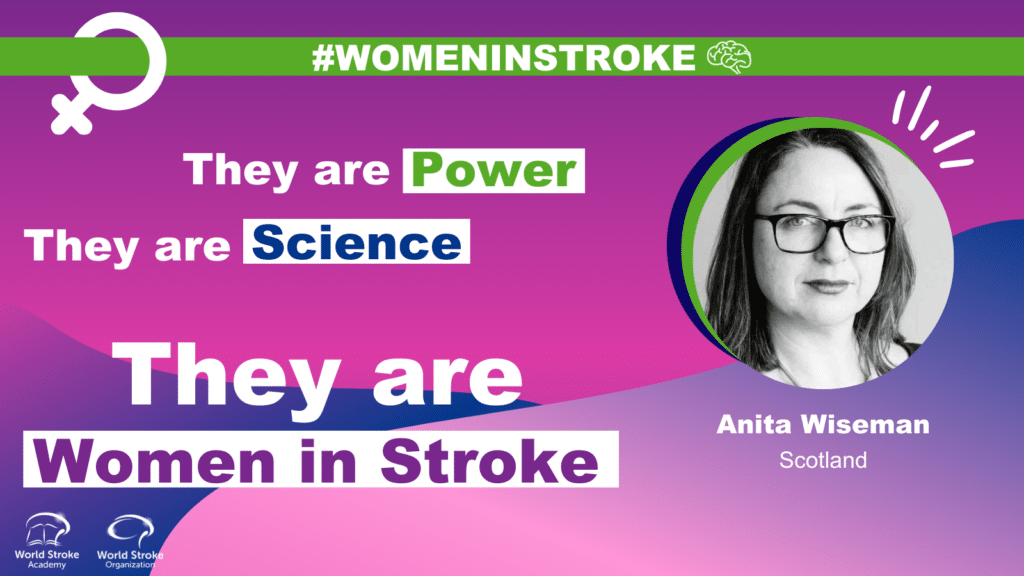Interview
Interview to Anita Wiseman by Laura Ceci Galanos
Question: What does being “outstanding” in your field of work mean to you? How do you usually measure success?
Answer: Well, I’m not sure that ‘outstanding’ is a word that I would use to describe myself. But I understand that can be a problem for many women, so maybe I need to work on owning it!
I’ve worked as a communication professional for over 25 years and for me success has always been about being able to reach, inform and engage people in an action – whether that is seeking information, or changing behaviour in a way that contributes directly to organizational goals. Working for a global membership organization like WSO, where the goal is to save and improve the lives of millions of people, that’s about working collaboratively to develop emotionally engaging messaging and resources that are as relevant and engaging as we can make them to communities around the world. It’s also about sharing creative ideas, innovation and challenges so that we can reach beyond the stroke stakeholder community to connect with an individual on the street who may not have realised that stroke mattered to them. While we’ve seen a huge up-tick in social media and press reach data which is gratifyingly quantifiable, sometimes the feeling of success comes more from the photos from our members that show ordinary people in the street reading information posters that we have created, or seeing images of people getting their blood pressure checked to reduce their risk of stroke.
Question: Besides your current field of work, in what other areas would you have liked (or still would like) to stand out?
Answer: I’ve always been interested in helping people who are less heard in our communities articulate their experiences and change how people see them. It’s what led me to a communications role all those years ago. Originally though, I was interested in using photography and filmmaking. I would have loved to have had a career as documentary filmmaker – right now I’m researching the purchase of a new DSLR camera with a view to revisiting that passion – but I have a bit more on my plate now so my ambitions to be the next John Grierson might not see fruition!
Question: Do you think leadership differs somewhat by gender? If yes, how so?
Answer: I think historically we’ve had a very specific idea of what leadership looks like – authoritative, strong, commanding, competitive and male! Many women, myself included, haven’t seen themselves reflected in that image, even when we’re told the door is open to us the realities can feel very different. So many of us have taken a different approach. We have focused on networking, collaborating, engaging, sharing and supporting. With the huge shifts in society, technology and communication over the past 20 years this is standing us in good stead now. Power has become more networked, we’ve changed our idea of what we need from leaders and it is more ‘feminine’.
This change gives everyone the opportunity to leverage different leadership skills and to bring their whole selves to the table. Certainly we’re still some way from where we’d like to be, but things are changing. You just have to think about the difference in leadership styles between Jacinda Arden and Margaret Thatcher to see how the options for female leadership are changing. It’s not always as easy, as universal or as fast as we might want it to be, but I think we can continue to make progress.
Question: In your opinion, what are the reasons for women’s lack of advancement into leadership positions, despite no visible barriers?
Answer: As I just said, it is one thing to say the door is open to women, it is another to create a culture that clearly values diversity and addresses the practicalities that would make walking through that door attractive. We need to make sure that we have open discussion about issues and constantly keep diversity thinking on the table. From research funding, meeting and conference design, to childcare support we need to always be thinking about whether the ‘accepted way of working’ affects women’s participation and advancement.
Research into health and scientific conference participation has shown that even where attendance of men and women is equal, men make more comments and ask more questions. Those male voices get three times as much space as women’s and that is an issue that needs to be addressed. It’s important to examine women’s participation and to look at ways to create spaces that feel accessible and safe for women to contribute. Researching the issues and asking women what would help is always a good place to start.
Question 5: As a woman, what is your advice to young female colleagues who feel they are not taken seriously by colleagues or superiors at work?
Answer: Don’t be afraid to speak out and take up space. Be confident in what you bring to the table, draw on your specific expertise and be prepared to evidence your arguments. Reach out to supportive women and men around you and keep on learning and listening to help you navigate where you want to go. Good leaders exist throughout organisations so lead from where you are and don’t give up.


